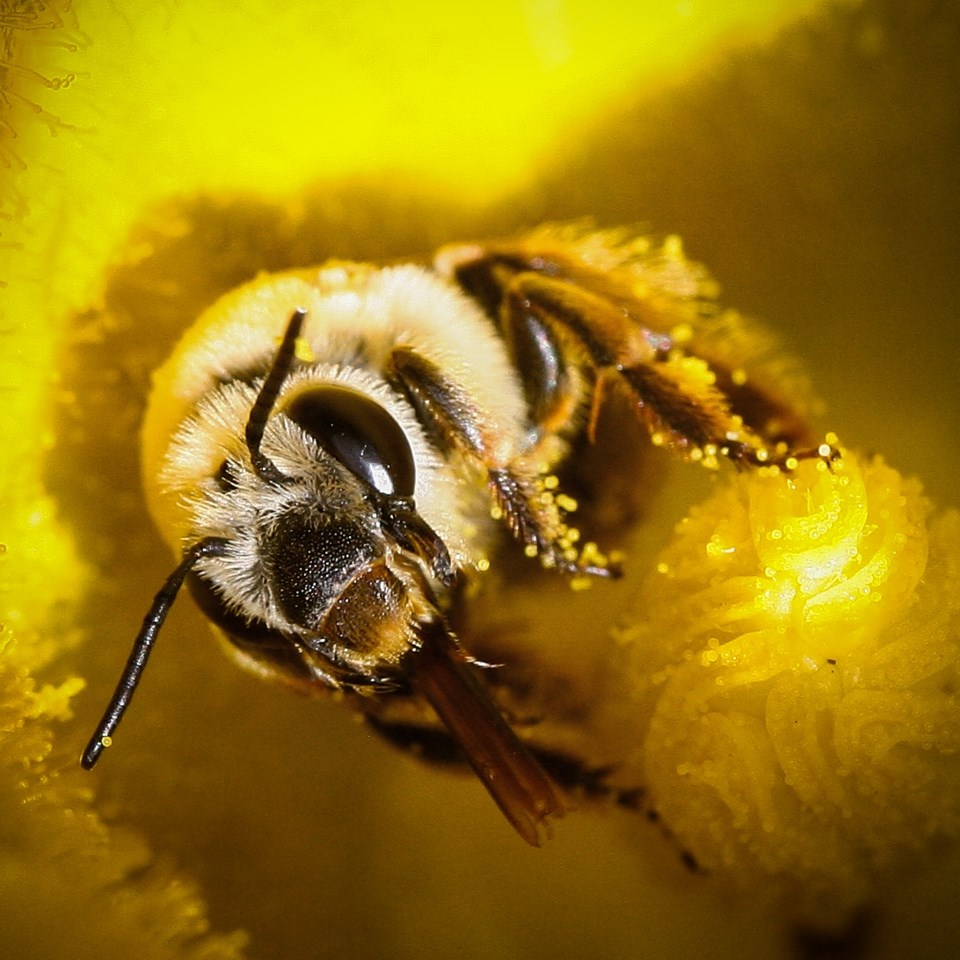This content was originally published by the Longmont Observer and is licensed under a Creative Commons license.
Sue Anderson, a local organic farmer, loves pollinators. In 2015, she formed the state advocacy group People and Pollinator Action Network. In 2016, she went local and founded Longmont Coalition for People and Pollinators, which recently morphed into the Boulder County People and Pollinators (BCPP.)
"You can thank a pollinator for one out of every three bites of food," Anderson says.
Pollinators, Anderson would like you to know, are not just honeybees, but also include a broad range of native bees, butterflies, moths, birds, and even bats.
The honeybee is not a native species, having come from Europe. However, there are 956 native species of bees in Colorado, and native pollinators pollinate more than 100 times more than honeybees.
Mike DiGrazia joined BCCP after learning that flowers he purchased at a local big-box store were sprayed with neonicotinoids. These pesticides, 'neonics' for short, are chemically related to nicotine, and harmful to bees. DiGrazia ripped the flowers out, and now markets neonic-free 'Pollinator Pods,' paper pulp shapes infused with pollinator-friendly seeds.
In Longmont, the group persuaded retailers to make the 'Pollinator Promise,' to label or eliminate neonic products, and to sell and identify native plants. "Are their plants with pesticides clearly marked? We call them every year," Anderson said.
Also, BCPP convinced the Longmont City Council, in 2017, to adopt a resolution to protect pollinators, and are working with the city to promote pollinator habitats in parks and greenways. "We want them to think about creating more natural areas, with native flowers and plants to provide more food. The biggest issue for most pollinators," Anderson emphasized, "is that there is simply not enough food. How do we create more pollinator habitat?"
One answer was sowing a 180-mile 'pollinator corridor' along I-76 to the Nebraska border. The group hopes to repeat the project in 2019, strewing the roadsides on the Diagonal Highway with flowering native plant seeds. The Colorado Department of Transportation is "very interested," she said, adding that volunteers would do most of the actual planting. Besides being beneficial to pollinators, Anderson enthused that the colorful borders are "very pretty to look at."
Furthermore, Anderson says there are lots of things Longmonters can do to help the pollinators. "Plant native plants!" she stresses, suggesting echinacea, goldenrod, sunflowers, and asters. "Ask questions. Ask your lawn company what they use. Reduce or eliminate the use of pesticides. Green lawns are a "food desert" for pollinators."
Practicing what she preaches, almost the whole front yard at Anderson's farm is composed of oregano. "When you mow it," she laughs, "it smells like a pizza parlor, and the bees really, really like it."
In Longmont, BCPP also gets people together to form 'Pollinator-Safe' neighborhoods, and encourages "neighbors to talk to neighbors." Additionally, the group hosts a speaker series. The event is 'People, Pollinators, and Permaculture' on January 29th at 6:30 p.m. at the Longmont Library, where Permaculturist Avery Ellis will talk about how to create a pollinator foraging habitat.


.jpg;w=120;h=80;mode=crop)
